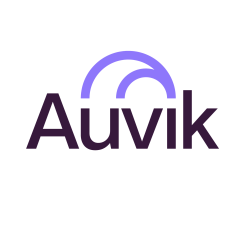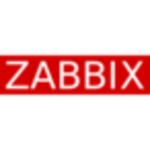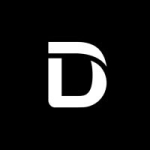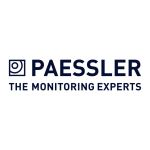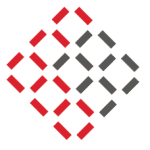What is our primary use case?
We use it to monitor the network infrastructure and assets of our clients. We are a managed service provider and it fits neatly into our role. We also use it to keep configuration change records, which is something we didn't have before. It's nice to have that in one platform.
How has it helped my organization?
When we are onboarding a new client with network infrastructure for monitoring, Auvik makes it very straightforward and simplified. It can map out and easily visualize the customer's network so that we don't have to manually do it. It definitely has increased automation.
We used PRTG but it lacked the mapping function to visualize the network with an interactive map. It also lacked the configuration backup tool, the hardware life cycle, and good NetFlow insights. Moving to Auvik has saved a good 30 to 50 percent of our time.
Another thing that I love that Auvik does and that PRTG doesn't do is the integration with a lot of our MSP tools like ConnectWise and Teams. PRTG would open tickets via an alert, but it would never close them if the alert cleared. All those tickets from PRTG would go to me and I would have to manually close them. I would get inundated with tickets. Auvik will also open a ticket but, once the alert clears, it will automatically close the ticket, saving me from having to close a lot of tickets. That too has reduced repetitive work for me by 30 to 50 percent.
Our MTTR has almost been automated because of the tickets. About 90 percent of our tickets have been automated. I still have to manually look at the rest and maybe do a little work against them, but it's not crazy. It has unquestionably helped out with resolving issues.
It has also helped tremendously with quarterly business reviews because, with just a click of a button, we can get the hardware life cycle and export all the data to an Excel spreadsheet. That helps our management.
And because most of our clients are remote from us, that visibility that Auvik gives into their environments is in a better overall layout than our previous platform. The UI of PRTG was very '90s-esque, like a poorly designed website. It had the functionality but the UI was lacking tremendously when it comes to ease of use and organization.
The visibility Auvik provides almost makes it so that we don't have to be actively monitoring things. We don't need a NOC or a SOC to get alerts. We're more confident now in the network management solution that we have. Before, we were getting alert upon alert and my phone would be blowing up and then I would get all the tickets. Auvik has put that kind of stress on the back burner.
Overall, it has freed up about 25 to 30 percent of the time I used to have to put into things.
Another advantage is that I didn't want to show a junior tech our previous platform because they wouldn't know what to do with it. Auvik, on the other hand, is more geared toward all levels, rather than just the high-level engineers. It will tell you what might be the cause of a problem rather than just alerting on something that it sees. While we don't have it geared toward our lower-level team yet, it's very easy to use and they should be able to pick it up.
What is most valuable?
Among the most valuable features are the hardware life cycle and configuration backups, when applicable, since that's not applicable for all vendors, platforms, and networking types. When it does show you the hardware life cycle for, say, a Cisco device and the configuration backup, that's the most useful aspect for me as a network engineer.
Once it's set up properly with the SNMP strings or credentials, it's very straightforward to use. It has a small learning curve, which is nice for a network monitoring tool. Ease of use is very high on our list of requirements, not just for me as a network engineer, but when I want the help desk or the level-ones to be able to look at something. It needs to be easy to use.
It's also very much a single pane of glass, which is especially helpful for our business model as an MSP.
In addition, I greatly appreciate Auvik's ability to visualize network mapping. It's very good for visualizing how the network is formed and the interconnections. Since it's interactive, it's more helpful than a static map or static video diagram. It's a very helpful feature.
What needs improvement?
I like how you can request features, and one feature that I think they're working on is the ability to export the topology map as a video.
Something else I would like to see would be additional vendors for the hardware life cycle. Right now, they mainly focus on Cisco stuff, which is fine, but not every customer we have uses Cisco. I'm not looking for them to add every networking vendor, and these just might be legacy devices, but Fortinet is a big one that we've used and I don't think Auvik has the hardware life cycle for that. I don't know how it does on Aruba, but we have some legacy HPE as well. I do like the Meraki integration, although it would be nice to see a Juniper Mist and Aruba Central integration.
Another improvement that would be nice, one that should be at the top of their list, is the ability to properly identify vulnerabilities, based on a vendor's security alerts. If it could recognize, "You're on this version of firmware and you're hitting these types of vulnerabilities," that would definitely check off a big security feature for this tool.
For how long have I used the solution?
We demoed Auvik early in the year and we fully signed up sometime in the summer, so we have been using it for several months.
What do I think about the stability of the solution?
Overall, it is very stable.
Every platform or NMS has its own quirks or kinks that have to be worked out, but it's nice that Auvik will update on the backend. I don't have to worry about updating a server platform.
What do I think about the scalability of the solution?
Its scalability is very high. It gets a 10 out of 10.
We have Auvik across multiple organizations. We monitor, administer, and maintain, network monitoring for dozens of clients. It's deployed across all their different environments and in organizations with multiple branch offices. Our clients include the smallest, one-branch organizations up to medium-to-large enterprises. It definitely fits all those use cases.
How are customer service and support?
The technical support that Auvik provides is very good. They're very quick to respond. They have a live chat feature, which is very nice. They're pretty knowledgeable since it's their product. There's no comparison between the support from Auvik and the support we received from our previous vendor.
How would you rate customer service and support?
Which solution did I use previously and why did I switch?
We used PRTG before and we're still using it now. We're trying to slowly migrate from it. We put all our eggs in that basket, even though it was a very flimsy basket. We used it for networking servers, mainly.
We didn't use it for endpoint and computer assets. That was handled by ConnectWise Automate. We wouldn't want Auvik to do that.
How was the initial setup?
The deployment was very straightforward because of the user interface. This is where it's more straightforward than Domotz. Sometimes, when you have too many choices, it can be a burden. With Auvik you decide: Do you want the OVA? Do you want to install a .exe? It's very simple. I could probably have someone on our level-one team actually set it up.
It took less than 10 to 15 minutes after the collector was implemented before the network mapping started to populate with basic devices. Then it was a matter of fine-tuning. It was up to me to categorize devices as I saw fit and tune the SNMP so that it got the data that I wanted.
Overall, our implementation of Auvik took a few weeks because of the number of sites and devices and the fine-tuning. Also, an NMS is always being worked on. You're rarely perfectly happy with how it looks. It's constantly being fine-tuned so that alerts generate correctly without over-alerting.
That's one thing I have liked compared to PRTG. Auvik's out-of-the-box alerting is very straightforward and handles the alerts you are likely to see. But that's also where it could do a little bit better, in the customization of alerts. With PRTG, we could alert on almost anything, whereas with Auvik, you're somewhat zoned in.
We have definitely saved a good amount of time on the setup of Auvik, compared to PRTG. PRTG was significantly cheaper, but there was no onboarding help. It was a matter of, "Here you go, do it yourself." Auvik had a customer success team to walk us through and help iron out any kinks, which was greatly appreciated. That was part of what we're paying for. The pricing helps with support. PRTG's support, while it was okay, wasn't as straightforward and easy to get a hold of someone compared to Auvik.
The maintenance involved with Auvik is around fine-tuning for data collection, but it does not involve updating the agent or the backend. It's nice that I don't have to worry about updating the platform itself. I just have to worry about the data getting collected and making sure SNMP strings are updated.
I was the only one involved in the initial deployment, from our side.
What was our ROI?
I didn't set up PRTG but compared to my brief time with PRTG, Auvik has been night and day and the value has been very quick. For some of our customers, we never had a solution in place to back up configurations. Auvik now provides that. There's definitely peace of mind knowing a config backed up. It is definitely proving its value.
What's my experience with pricing, setup cost, and licensing?
I don't think Auvik's pricing should be based on device, which it is right now. I don't know what their market share is or how they compete with Domotz, but if they want to stay competitive, Auvik should have simpler pricing. Domotz is $21 per month per site, whereas Auvik is per device, so it definitely adds up very quickly.
Which other solutions did I evaluate?
In addition to the other issues I mentioned, Auvik and our previous platform are night and day in the following way as well. We would almost be scared to put in a subnet for PRTG to scan because we wouldn't know what we got. Now, it's easy to see what we're getting in terms of the devices and prune it from there.
It's also helpful that it's not onsite because we're trying to move servers and services off-prem. Auvik is definitely a step in the right direction. It's one less piece of infrastructure to worry about. You don't have to open up your environment to collect monitoring information. It just needs outbound traffic, which makes things easier. That's where it shines compared to an on-prem solution. Also, you don't have to maintain or update software or the agent. It does that automatically. I don't have to worry about updating firmware.
With an on-prem solution, everything is hub and spoke and everything has to go back to our data center. Auvik, as a cloud solution, eases up on that usage of our circuits and internet.
While Auvik is geared toward network infrastructure for an MSP, it could probably do a little bit better on the server side. PRTG definitely had that as an advantage over Auvik. It could monitor servers and that type of infrastructure better than Auvik can.
Auvik also doesn't have some customizable automations for a specific use case that might need an if-then-that statement to run a script or commands. That might be very niche, but one of our clients is using PRTG like that.
It is nice to see that Auvik has an expanding roadmap. I don't know what PRTG has on its roadmap for new features, but it's nice to see that Auvik is not getting stale.
I did evaluate Domotz and the pricing worked out in favor of Domotz, but we ended up going with Auvik. We're only in Auvik for a year and we'll see how it goes, but unless the pricing becomes too high, I don't see us moving away from it. Domotz was the only other one that was within reach and more geared toward MSPs.
An MSP business can almost flip a coin between Domotz and Auvik. Auvik is priced per device, whereas Domotz is priced per location or site. It works out in Domotz's favor, although I can't speak for its feature sets. Domotz does have a leg up in terms of deployability. It has a hardware appliance, almost like a Raspberry Pi, so it's easy to deploy on anyone's network, whereas you have to run Auvik as a virtual appliance. It can't run on ARM, which is not a deal-breaker, but it is nice to have options when deploying. You're somewhat locked in with Auvik for deployment because you need to run it on a server or in someone's vCenter. It's not that customizable, whereas Domotz can run on ARM as well, I believe.
Auvik has two versions, Essentials and Performance, which is similar to Domotz's model. With Performance you get NetFlow visibility and another feature and that increases the price per device. But the device types they charge for are only those that are part of network infrastructure. Overall, it's probably cheaper via Domotz, but if you have a lot of sites with just one device, it might be cheaper to go with Auvik. Auvik doesn't charge for access points, but they do charge for switches, routers, and firewalls.
What other advice do I have?
Auvik definitely helps keep device inventories up to date. If I have the scan running, it does a really good job of finding devices on the network when the subnets are put in. However, the network infrastructure shouldn't change that much, so I don't typically have it running scans all the time. We're mainly using it for network infrastructure and not as much for endpoint devices. It primarily shines when it comes to network infrastructure, but it did do a pretty good job of doing the initial inventory of the networks.
My advice would be to do a proof of concept if you are in an MSP role or organization, because the costs can quickly add up.
Disclosure: PeerSpot contacted the reviewer to collect the review and to validate authenticity. The reviewer was referred by the vendor, but the review is not subject to editing or approval by the vendor. The reviewer's company has a business relationship with this vendor other than being a customer: MSP

